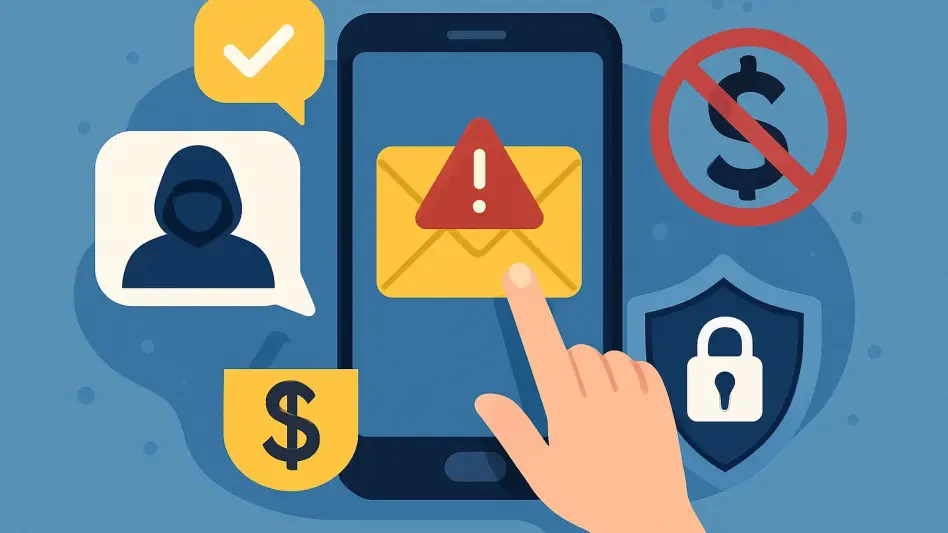As cybercriminals continue to refine their methods, users of popular platforms like Gmail are finding themselves increasingly vulnerable to innovative phishing attacks. Current trends in phishing leverage trusted infrastructure to craft authentic-looking emails capable of bypassing sophisticated security systems. One of the most troubling tactics involves exploiting Google’s infrastructure, where attackers mimic legitimate Google emails to deceive recipients. This is achieved by using Google’s own DKIM signature to pass verification, allowing the phishing email to appear genuine. The consequences of this exploitation are far-reaching, highlighting vulnerabilities within even the most trusted digital platforms.
The Nature of Sophisticated Phishing Threats
Authenticity in Phishing Emails
Phishing attacks have reached a new level of sophistication by merging false security notifications with familiar legitimate sources. The primary attack vector begins with a convincing email, supposedly originating from [email protected]. This email expertly mimics Google’s appearance, enhancing its credibility and consequently increasing the likelihood of users following its instructions. Attacking entities direct users to deceptive support portals hosted on Google subdomains, cunningly crafted to be indistinguishable from official Google pages. Through these portals, users are enticed to either ‘Upload additional documents’ or ‘View case,’ both options designed to lead users to a fraudulent sign-in page where login credentials are at risk of being harvested. This attack underscores a significant threat to user security by utilizing features trusted by millions worldwide.
Exploiting Google’s Infrastructure
The approach employed by cybercriminals involves mastering Google’s infrastructure to create false legitimacy. By registering a deceptive domain and constructing a Google account under an identity that appears benign, attackers proceed to develop a Google OAuth application integrated with their malicious activity. They label this application as ‘Google Legal Support,’ adding ample white space to enhance its authenticity in the email’s format. This strategic move allows the phishing email to masquerade successfully as a legitimate ‘Security Alert,’ passing all validity checks due to being signed by Google’s DKIM key. The digital camouflage used by attackers complicates its detection, making users prone to fall for this clever deception unless adequately alarmed and protected.
Addressing System Vulnerabilities in Google’s Platform
Identifying and Rectifying System Flaws
Understanding the roots of this vulnerability encompasses the study of Google’s practice of hosting content on subdomains. The absence of an efficient mechanism for reporting abuse on these sites leaves room for malicious content to flourish almost unchallenged. This weakness, identified by cybersecurity experts, facilitates the rapid uploading and distribution of phishing content. Experts have suggested swift measures, such as disabling scripts and arbitrary embeds that compromise security through Google’s sites. These modifications would significantly curtail attackers’ ability to exploit the platform. Google’s acknowledgment and ongoing efforts to resolve these flaws indicate a proactive stance in mitigating the risks posed by such advanced phishing tactics.
Strengthening Digital Defenses
In response to these challenges, Google proposes several security enhancements aimed at curbing phishing activities effectively. Users are advised to bolster their account defenses by activating two-factor authentication and employing passkeys, substantially reinforcing their digital security. These steps are essential in thwarting unauthorized access, as they add layers of protection that frustrate phishing attempts. Google is also working on addressing the OAuth bug responsible for enabling fraudulent activity, intending to fortify its vulnerability. By implementing these recommendations, users contribute to a more secure online environment, safeguarding personal information against cunning phishing endeavors.
Enhancing User Vigilance and Platform Security
User Responsibility in Cybersecurity
The technological landscape demands vigilant user behavior to combat the persistent threat of phishing. Users should remain alert to any unfamiliar messages pretending to be security notifications, regardless of how authentic they appear. Employing discerning judgment when engaging with emails claiming to originate from trusted sources is essential in preventing personal and data breaches. Alongside maintaining up-to-date security settings, including enabling two-factor authentication, users should exercise caution with attachments and links in unsolicited emails. A proactive mindset toward personal security is crucial in ensuring individual protection from these prevalent threats.
Collaborative Efforts for Secure Platforms
As cybercriminals continue to enhance their techniques, users of popular platforms like Gmail are facing increased vulnerability to sophisticated phishing attacks. These phishing trends are now cleverly utilizing trusted infrastructures to design emails that look authentic enough to bypass advanced security systems. A particularly alarming method involves leveraging Google’s own infrastructure. Attackers are imitating legitimate Google emails to deceive users by using Google’s DKIM (DomainKeys Identified Mail) signature, which makes the fraudulent emails seem authentic. This manipulation enables phishing emails to pass verification checks convincingly. The impact of such exploitation is significant, exposing weaknesses within even the most trusted digital frameworks. As phishing tactics become more innovative, it underscores the urgent need for heightened security measures and continuous vigilance to safeguard sensitive personal and business information in an increasingly digital and interconnected world.








